Guranteed Departure
Gobi Desert Trekking invites you to discover a vast desert which covers the southern part of Mongolia and one of the greatest deserts in the world. Trek along its best sites and discover more on your foot. The Gobi Desert trek will bring you to canyons, cliffs, sand dunes, oases, mountains and dried out lakes or evaporates where salt is extracted. Be a guest to camel herding nomad's ger.

We’re going to take a flight today early in the morning. We will land in Dalandzadgad, a province town in the South Gobi, after an hour and a half. Our team will pick you up and take you on an adventure through the stunning gorges of the Altai Mountain Chain. The Yolyn Am and Dungenee Canyons, both in the Gobi Gurvansaikhan National Park, will be visited. Those green valleys were carved by ancient rivers.
Wild Argali sheep, Ibex, desert gazelles, and Golden Eagles are also possible sightings. We’ll also pay a visit to the Dalanzadgad museum, which houses a collection of dinosaur bones.
(Ger camp L, D)
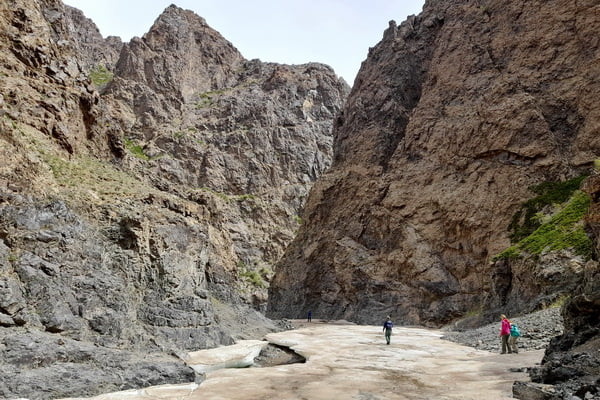

We’ll pass through Dungenee Canyon on our way to Noyon village later today. The Gobi Desert extends through Mongolia and China, measuring 1,610 kilometers from southwest to northeast and 800 kilometers from north to south. It covers an area of 1,295,000 km2, making it the world’s fifth largest and Asia’s largest arc of land.
During the winter months, the Gobi is a cold desert with frost snow on its dunes. In addition to being far north, it is situated on a plateau between 910 and 1,520 meters above sea level, which leads to the cold temperatures. The Gobi receives around 194 millimetres of rain per year on average. In the winter, snow blown from the Siberian Steppes enters parts of the Gobi, providing additional moisture. The Gobi experiences temperature extremes ranging from –40°C in the winter to +50°C in the summer due to these winds.
(Tented camp B, L, D)
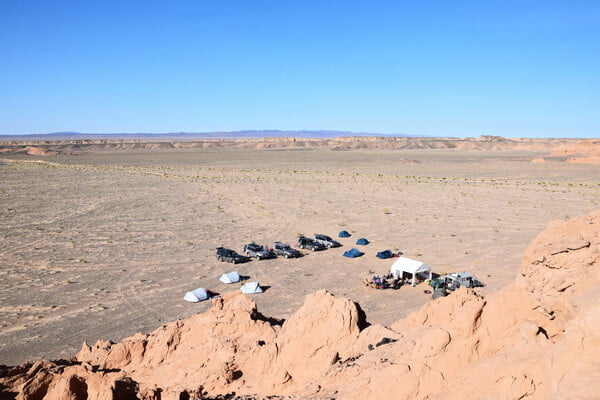

We’ll load all of our belongings onto our camels (or our jeep) and begin our trek. We will trek along the southern side of the Khuren Khanangiin Nuruu Mountain on our first day.
(Tented camp B, L, D)


Today we’ll hike north through the Khuren Khanangiin Nuruu Mountain’s canyon.
(Tented camp B, L, D)
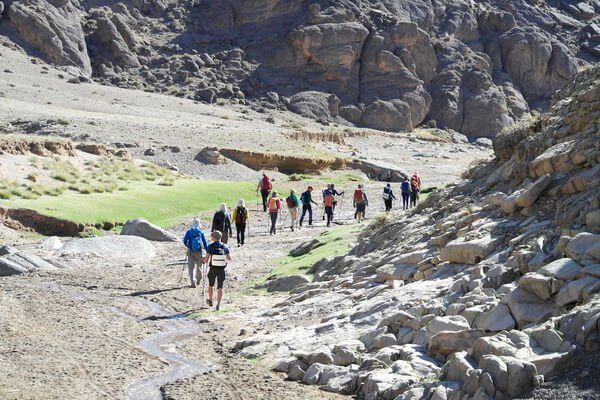

We’ll travel another day to trek north to the once-famous Tesiin Lake. This almost dried-up lake is now used to collect salt. It’s one of Mongolia’s numerous evaporates.
(Tented camp B, L, D)



For 2 more days we will trek along the Zegstiin Tsagaan Sand Dunes, into the direction of Nemegt Canyons. Depending of the speed of our trekking we will reach the canyons in the evening of the second day.
(Tented camp B, L, D)
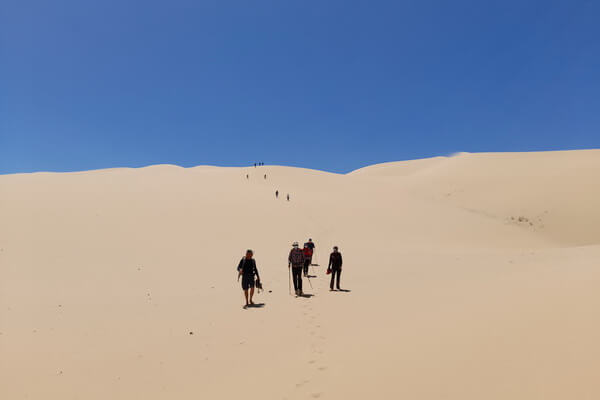

We’re going to the Khongoryn Els today. Mongolia’s biggest sand dunes can be found here. The dunes, which can reach a height of 275 meters in some areas, extend for more than 100 kilometers from East to West. Behind the sand dunes, the Sevrei Mountain’s impressive black rocky mass can be seen.
(Ger camp B, L, D)


Today’s drive will take us to Bayanzag, also known as the “Flaming Cliffs,” the world-famous site where palaeontologist Roy Chapman Andrews discovered dinosaur bones and eggs. The local scenery is a lovely blend of rocks, red sand, and scrubs. Spend some time exploring the cliffs while you’re here.
(Ger camp B, L, D)


Take the road to Dalanzadgad. We’ll spend the afternoon relaxing and exploring this small village on the outskirts of the Gobi Desert.
(Hotel B, L,)
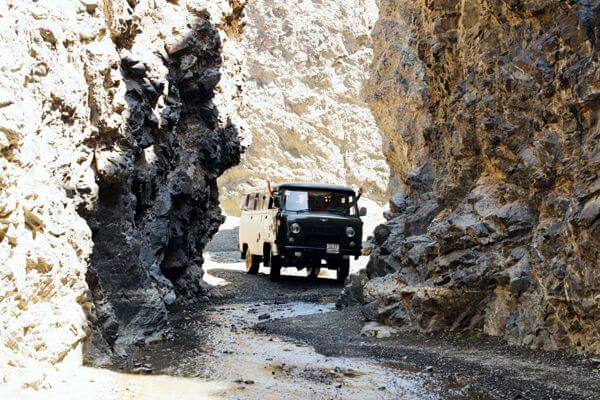

The time has come to leave and fly back to Ulaanbaatar, Mongolia’s capital. You can use your free afternoon to see as you fit. You could always go see the lovely cultural show and admire the contortionists while watching colorful and rhythmic Mongolian dances.
(B)

ADDRESS:
